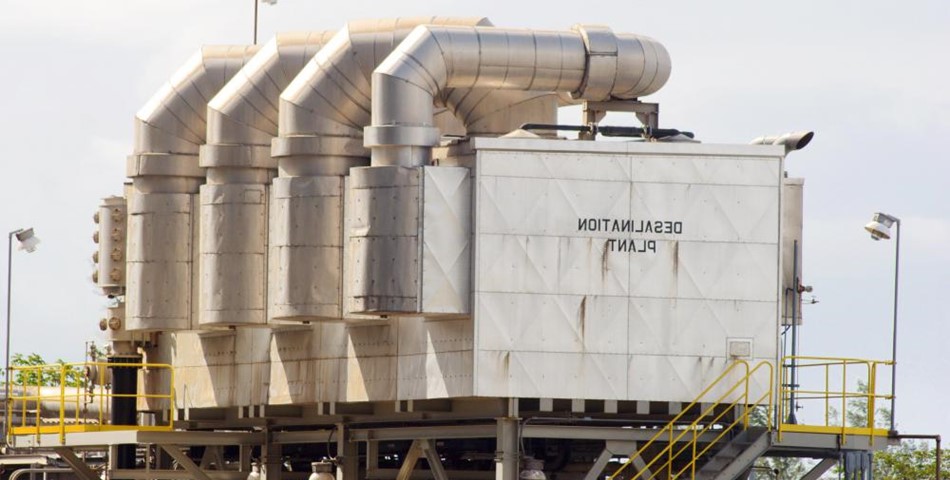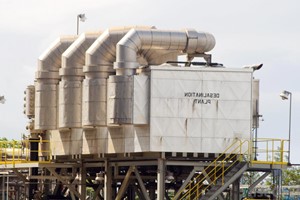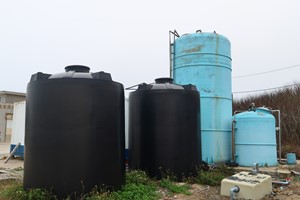As per the report published by The Brainy Insights, the global water desalination market is expected to grow from USD 13.50 billion in 2021 to USD 28.83 billion by 2030, at a CAGR of 8.8% during the forecast period 2022-2030.
The growing world population is accompanied by rising demand for potable water. The natural freshwater resources on earth which are accessible and fit for consumption are around 0.5% of the earth’s hydrosphere. Overexploitation of water for irrigation, manufacturing, and other household consumption has led to the depletion of the earth's freshwater resources. The supply of water is in deficit. The demand for potable water is anticipated to rise at an annual rate of 1%. The growing demand for water and falling supply of natural water resources will drive the demand for water desalination. Water desalination is the only inexpensive and most efficient method presently available to meet the rising water demand.
Seawater and brackish water are used in the water desalination process. Their use reduces the burden on freshwater resources and provides ample time to replenish itself. Climate changes have led to uncertain weather changes, making rainwater dependency a vulnerable prospect. There have been rising instances of droughts around the world; the desalination of seawater can meet the demand for water in these arid regions. Seawater has a high concentration of salts, which is unfit for human consumption, the constant process of desalination of seawater results in scaling. Scaling is the deposition of minerals and salts on the membranes of the water desalination equipment. This deposition reduces the lifespan of the membrane. Reduced lifespan leads to the use of more membranes which increases operation costs. Preventive measures such as disinfectants, anti-scaling, or pre-treatments can be used. However, these measures are also expensive in nature, hampering the market's growth. Hybrid water desalination techniques are being developed to reduce production and maintenance costs. Hybrid technologies are highly efficient as well as cost-effective. Hybrid technologies could facilitate market expansion and provide lucrative opportunities for the water desalination market. The resultant by-product of water desalination is brine. Brine is water with a high concentration of salts. When brine is released into the oceans, it damages the marine ecosystem. When it is released inland, it harms flora and fauna of the region. The salinity of the inland soil also rises which is harmful to biodiversity. The listed environmental concerns are likely to challenge the water desalination market.
The growing global population, rapid urbanization, rising industrialization, depletion of freshwater resources, rising water scarcity & water pollution will drive the growth of the water desalination market. The increase in government spending on wastewater management, water conservation & growing infrastructural expenditure is also expected to contribute to the market's growth.
What Is Membrane Distillation?
Membrane distillation is a process that is used to separate or purify liquids. The technology works by creating a gradient of temperatures across the membrane, with one side being warmer and the other side cooler. Vapors rising from the warmed liquid pass through the membrane to the cooler area of lower pressure, where they condense into a purified form of the liquid. This type of distillation has applications in industrial plants, where certain liquids must be separated out from a mixture, and in desalination plants, where fresh water must be obtained from saltwater.
When a liquid is warmed, it eventually begins to evaporate or boil. Heat causes the molecules of the liquid to gain energy, and they rise in a vaporous state. An example of this is the steam that rises from hot water.
In membrane distillation, the vapor is contained in a chamber and rises in pressure, forcing the molecules through a porous medium — the membrane. The type of membrane that is used in this distillation process allows only the vapor to pass through, eliminating other impurities. After the vapor passes through the membrane, it encounters a cool area or surface that causes it to condense back into a liquid state. The resultant liquid consists only of the molecules that were in the vapor, and any salt or other non-evaporated impurities are still in the original mixture
Some desalination process utilizes membrane distillation to create drinking water from seawater.
A few types of membrane distillation processes exist. Direct-contact membrane distillation, which is commonly used in desalination, keeps the cooling solution in contact with the far side of the membrane. Air-gap membrane distillation separates the coolant from the membrane by a gap and a hard surface on which the vapor can condense. Other types of processes, such as sweep-gas and vacuum membrane distillation, actively pull vapor through the membrane using a gas or vacuum. These latter techniques are useful for removing undesirable compounds from the original mixture.
The uses of membrane distillation are diverse. It can be used to remove salt and other mineral impurities from water, but it also is useful in removing specific chemicals or creating concentrated mixtures for industrial or commercial use. As the vapor distills through the membrane, it is removed from the original mixture, making that original mixture more concentrated.
Membrane distillation has become a desirable solution for desalination because it requires a relatively low amount of energy to operate. It can be run by solar heat or waste heat from other operations. The small amount of heat that is required for the process makes it a possible solution for creating small-scale plants in remote areas that might not have access to extensive power resources.













